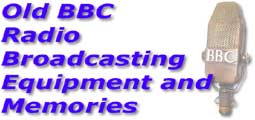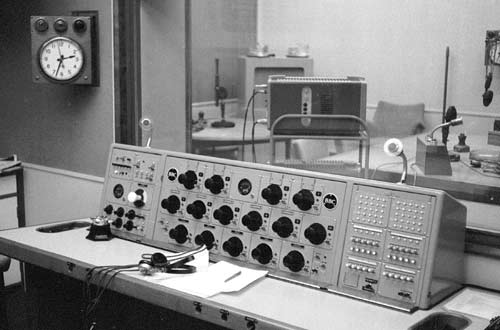
This view shows the SM's desk with 5 local and 10 outside source channels, described more fully in the section on 3B.
Related page
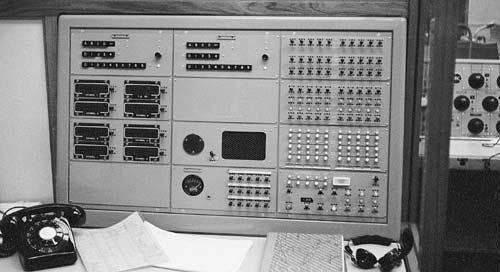
The TO's (Technical Operator) position. The sheet next to the PABX phone lists the 200 sources available, divided into 4 columns of 50 for A, B, C and D codes. Studios were on B codes because of the large number of basement studios. e.g. Studio B15 was on code B15.
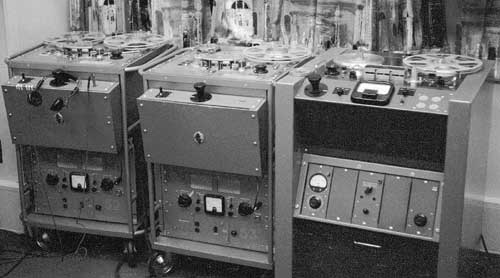
At the time of this photo 1A had an unusual mix of TR90 and Leevers Rich tape machines. Most BH studios at the time were equipped with Philips machines but 1A's normal complement was 4 TR90s. 1A was also unusual in having no form of Tape Control Panel. TCPs provided controls which selected the source fed
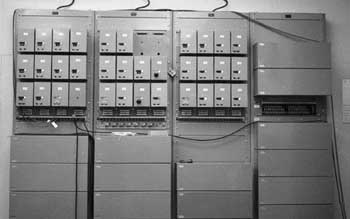
The next photo shows the bays containing amplifiers and relay panels. The power supplies are out of shot at the bottom.
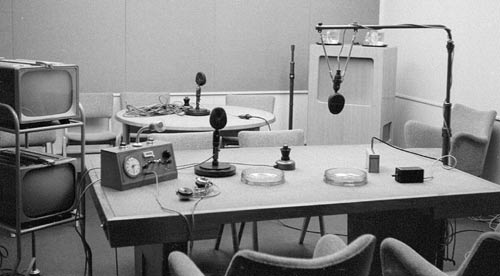
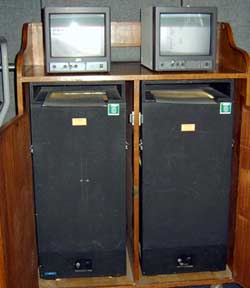
There was also a lip mic in the sportsroom so that football results could be read off the teleprinters as they came in. Angus was always keen to use the latest technology including phone calls to get things on the air fast, but woe betide the reporter who did 1 min 7 secs when he'd been asked for a minute!
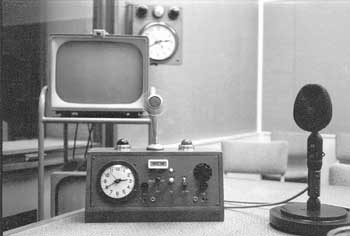
In 1964, competition from the pirates forced the Light Programme to "Swing into Summer" with continuous Saturday afternoon pop music and sport moved to the "Third Network". "Sports Service" ran from 1230 to 1800 and was linked by a staff announcer with 1A effectively the continuity. When the football season began, Parade and Report came from B9 which became a contributing studio. After 1A was turned into two Radio 2 suites in 1968, the main mixing studio became 3B and later 3E.
In April 1970 as part of a major reshuffle, sport moved back to Radio 2 (Light) but only from 1430 to 1745 with Sports Parade on Radio 4, but before long an integrated sport and OB department was established. Sports Parade disappeared and "Sport on 2" ran from B9 for many years from 1330 to 1800, incorporating Sports Report and even its famous sig tune "Out of the Blue" at five o'clock.
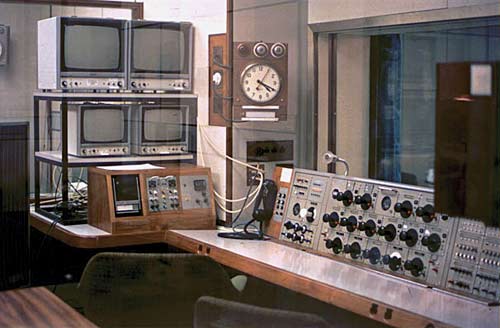
As well as the camera feed from the sports room, the monitors were used to keep an eye on TV sport OB feeds passing through the building. Given the limited talkback facilities, Sport on 2 operated with a production assistant talking to the OBs via a headset and the individual prefade/ talkback keys to the right of the picture. The producer "hovered" to the left of the panel SM, often leaning on the main monitoring loudspeaker just visible on the left and talking to the presenter via the studio talkback key immediately to the left of the bottom row of faders. With only 10 outside source channels, much careful juggling of sources was necessary, especially on the busy Saturdays when the cricket and football seasons overlapped.
B9 was later re-equipped with a GP desk. With the start of Radio 5, sport moved to a new 1A not far from the site of the original.
